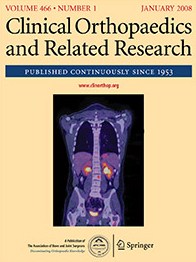
SPINE
Disc type, symptom severity/time & work status are outcome predictors in disk herniation
This report has been verified
by one or more authors of the
original publication.
Clin Orthop Relat Res. 2015 Jun;473(6):1920-30.
474 patients with a lumbar disc herniation were randomized to either undergo surgical treatment via a lumbar discectomy or a nonoperative intervention in order to assess long term outcomes and determine outcome predictors. Patients who refused randomization were enrolled in an observational cohort and contributed follow-up data based on subsequent treatment. Between the randomized groups, differences after 8 years in primary outcomes of pain and function did not significantly differ between operatively and nonoperatively managed patients, though secondary outcomes of leg pain, the Sciatica Bothersome Index, and patient-reported satisfaction and perceived improvement favoured the operative group. In the analysis of possible predictive factors; sequestered fragments, high intensity pain for a period of more than 6 months and a work status including students, homemakers, unemployed, or retired were characteristics suggestive of greater benefit with surgery.
Unlock the full ACE Report
You have access to {0} free articles per month.Click below to unlock and view this {1}
Unlock NowCritical appraisals of the latest, high-impact randomized controlled trials and systematic reviews in orthopaedics
Access to OrthoEvidence podcast content, including collaborations with the Journal of Bone and Joint Surgery, interviews with internationally recognized surgeons, and roundtable discussions on orthopaedic news and topics
Subscription to The Pulse, a twice-weekly evidence-based newsletter designed to help you make better clinical decisions
Exclusive access to original content articles, including in-house systematic reviews, and articles on health research methods and hot orthopaedic topics
Or upgrade today and gain access to all OrthoEvidence content for just $1.99 per week.
Already have an account? Log in


Subscribe to "The Pulse"
Evidence-Based Orthopaedics direct to your inbox.
{0} of {1} free articles
Become an OrthoEvidence Premium Member. Expand your perspective with high-quality evidence.
Upgrade Now













































































